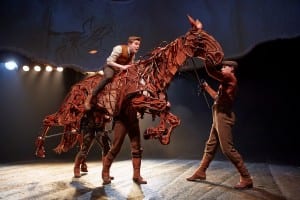Outer space offers up visually incredible scenery. Our company believe that the best way to represent such beauty is to use Black Light Theatre, a form that originated in Asia and is now famously performed in Prague and other parts of the world, as a depiction of space during the Handyman’s delusion. The use of UV lighting in this style of performance allows for the possible illusion for objects and people to float in darkness. Along with the Handyman, I also want the space helmet to float across the stage, and have the ensemble actors use gloves and UV paint to represent shining stars that move and whizz around the stage. Black Light Theatre seems the most effective and appropriate way to achieve these aims.
Here are some examples from Jiri Srnec Theatre, the founder and first ever company of Black Light Theatre. This video displays the sense of magic that this type of theatre can create, and the creative imagery that we want to capture in our performance.
Despite the goal to use UV light in this way, we have to be conscious of the limitations of the Lincoln Performing Arts Centre’s stage lighting. If UV lighting is not possible to use, an alternative is to use LED lights to represent stars, and allow for more visible ensemble work such as puppetry theatre, seen in War Horse – choreographed by Tony Sedgwick and puppets created by Handspring Puppet Company.

By encompassing the puppetry type methods that are used in War Horse, the emphasis is placed on the stars, and not the actors embodying the stars. Just as Poppiti states of the puppetry in War Horse: “[t]he animation and voices of the horse puppets must be believable, or the entire illusion is shattered” (Poppiti, 2011, 47), so must be the case in our performance, else the audience will not be captivated by the illusion of space and stars.
BlackLightTheatre (2009) The Best of Black Light Theatre – Black Light Theatre of Jiri Srnec. [online video] Available from https://www.youtube.com/watch?v=6L7-cLP9AOc&feature=youtu.be [Accessed 28 April 2017].
Poppiti, K. (2011) War Horse. Theatre Design & Technology, 47 (4) 42-53.
War Horse on Stage (2017) London: warhorseonstage.com.